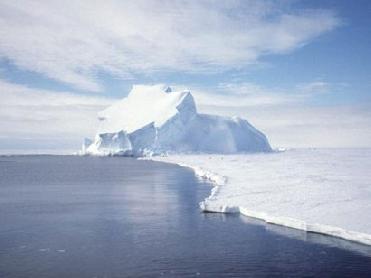
The above iceberg forms a small part of the Antarctica ice sheet. Photo credit: NASA
WASHINGTON (PTI): Scientists have solved the mystery of how icebergs break off Antarctica and Greenland, a breakthrough which they claim could help in predicting rising sea levels due to global warming.
Computer models that predict how ice sheets behave in warmer weather generally gloss over exactly how icebergs break off, as researchers have failed to understand the mechanism.
Now, a team of scientists in the US have identified calving as the reason behind it.
According to them, icebergs form fastest when parent ice sheets quickly spread out over the sea. Other factors like ice thickness, width of the ice flow, distance from land or waves are less important, the 'New Scientist' reported.
"For iceberg calving, the important variable -- the one that accounts for the largest portion of when the iceberg breaks -- is the rate at which ice shelves spread," the scientists said.
A fast spread means cracks form throughout the shelf, helping its disintegration. A slower spread means that deep cracks do not form as fast and the ice sticks together, they said.
In Antarctica, the Ross Ice Shelf extends 500 miles over the ocean before the edges snap off and form icebergs. Many other ice shelves stretch just a mile or two.
"Understanding when things will break is tricky because there is so much variability. Anyone who has dropped a coffee cup knows this. Sometimes the coffee cup breaks and sometimes it bounces," the study's lead author Richard Alley of Pennsylvania State University said.
The UN Climate Panel predicts that seas will rise by 18 to 59 centimetres this century because of global warming stoked by human use of fossil fuels.
 Previous Article
Previous Article Next Article
Next Article













The Indian Air Force, in its flight trials evaluation report submitted before the Defence Ministry l..
view articleAn insight into the Medium Multi-Role Combat Aircraft competition...
view articleSky enthusiasts can now spot the International Space Station (ISS) commanded by Indian-American astr..
view article